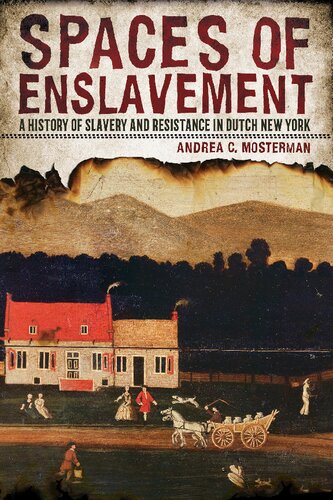

Most ebook files are in PDF format, so you can easily read them using various software such as Foxit Reader or directly on the Google Chrome browser.
Some ebook files are released by publishers in other formats such as .awz, .mobi, .epub, .fb2, etc. You may need to install specific software to read these formats on mobile/PC, such as Calibre.
Please read the tutorial at this link: https://ebookbell.com/faq
We offer FREE conversion to the popular formats you request; however, this may take some time. Therefore, right after payment, please email us, and we will try to provide the service as quickly as possible.
For some exceptional file formats or broken links (if any), please refrain from opening any disputes. Instead, email us first, and we will try to assist within a maximum of 6 hours.
EbookBell Team

4.1
100 reviewsInSpaces of Enslavement, Andrea C. Mosterman addresses the persistent myth that the colonial Dutch system of slavery was more humane. Investigating practices of enslavement in New Netherland and then in New York, Mosterman shows that these ways of racialized spatial control held much in common with the southern plantation societies.
In the 1620s, Dutch colonial settlers brought slavery to the banks of the Hudson River and founded communities from New Amsterdam in the south to Beverwijck near the terminus of the navigable river. When Dutch power in North America collapsed and the colony came under English control in 1664, Dutch descendants continued to rely on enslaved labor. Until 1827, when slavery was abolished in New York State, slavery expanded in the region, with all free New Yorkers benefitting from that servitude.
Mosterman describes how the movements of enslaved persons were controlled in homes and in public spaces such as workshops, courts, and churches. She addresses how enslaved people responded to regimes of control by escaping from or modifying these spaces so as to expand their activities within them. Through a close analysis of homes, churches, and public spaces, Mosterman shows that, over the course of the seventeenth and eighteenth centuries, the region's Dutch communities were engaged in a daily struggle with Black New Yorkers who found ways to claim freedom and resist oppression.
Spaces of Enslavement writes a critical and overdue chapter on the place of slavery and resistance in the colony and young state of New York.